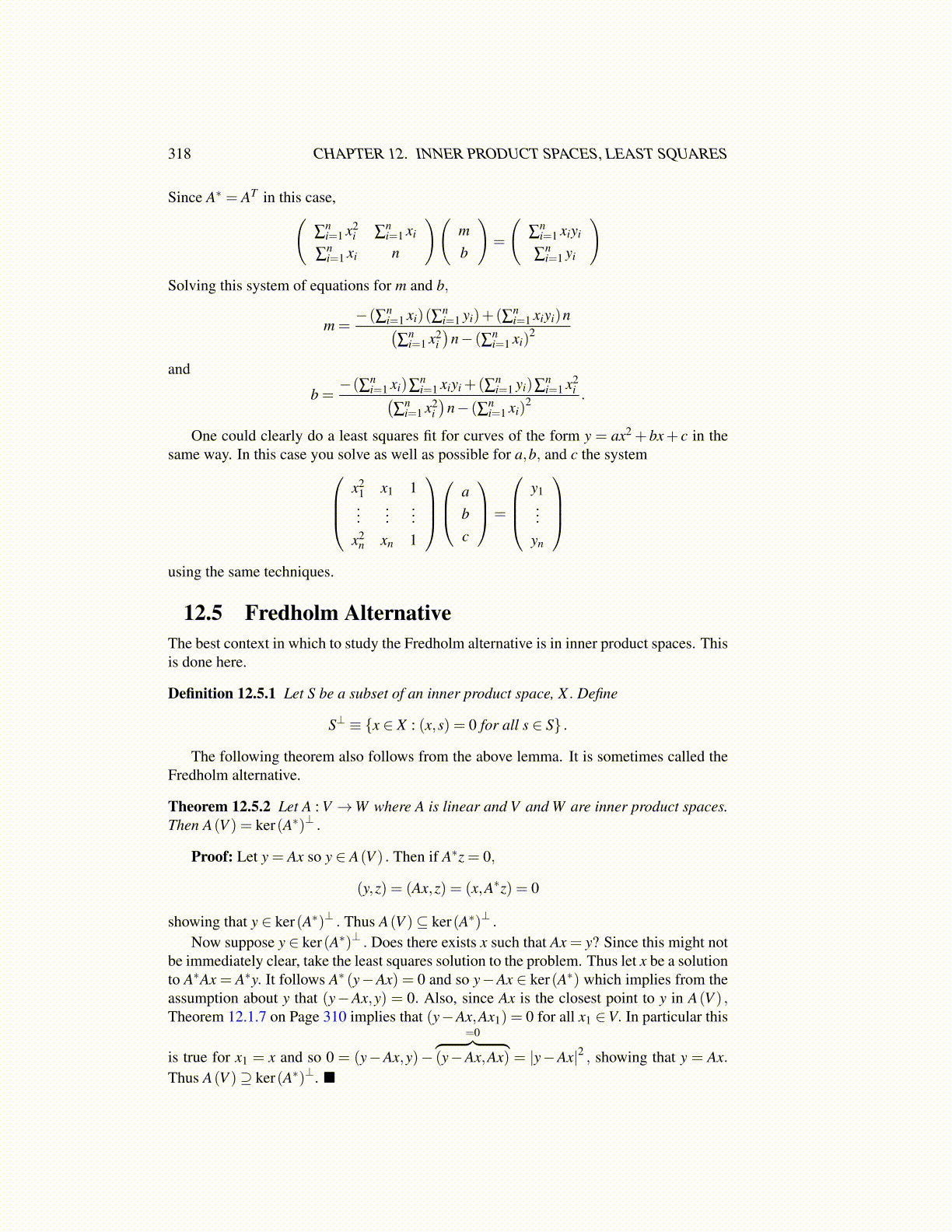
318 CHAPTER 12. INNER PRODUCT SPACES, LEAST SQUARES
Since A∗ = AT in this case,(∑
ni=1 x2
i ∑ni=1 xi
∑ni=1 xi n
)(mb
)=
(∑
ni=1 xiyi
∑ni=1 yi
)Solving this system of equations for m and b,
m =−(∑n
i=1 xi)(∑ni=1 yi)+(∑n
i=1 xiyi)n(∑
ni=1 x2
i
)n− (∑n
i=1 xi)2
and
b =−(∑n
i=1 xi)∑ni=1 xiyi +(∑n
i=1 yi)∑ni=1 x2
i(∑
ni=1 x2
i
)n− (∑n
i=1 xi)2 .
One could clearly do a least squares fit for curves of the form y = ax2 + bx+ c in thesame way. In this case you solve as well as possible for a,b, and c the system
x21 x1 1...
......
x2n xn 1
a
bc
=
y1...
yn
using the same techniques.
12.5 Fredholm AlternativeThe best context in which to study the Fredholm alternative is in inner product spaces. Thisis done here.
Definition 12.5.1 Let S be a subset of an inner product space, X . Define
S⊥ ≡ {x ∈ X : (x,s) = 0 for all s ∈ S} .
The following theorem also follows from the above lemma. It is sometimes called theFredholm alternative.
Theorem 12.5.2 Let A : V →W where A is linear and V and W are inner product spaces.Then A(V ) = ker(A∗)⊥ .
Proof: Let y = Ax so y ∈ A(V ) . Then if A∗z = 0,
(y,z) = (Ax,z) = (x,A∗z) = 0
showing that y ∈ ker(A∗)⊥ . Thus A(V )⊆ ker(A∗)⊥ .Now suppose y ∈ ker(A∗)⊥ . Does there exists x such that Ax = y? Since this might not
be immediately clear, take the least squares solution to the problem. Thus let x be a solutionto A∗Ax = A∗y. It follows A∗ (y−Ax) = 0 and so y−Ax ∈ ker(A∗) which implies from theassumption about y that (y−Ax,y) = 0. Also, since Ax is the closest point to y in A(V ) ,Theorem 12.1.7 on Page 310 implies that (y−Ax,Ax1) = 0 for all x1 ∈V. In particular this
is true for x1 = x and so 0 = (y−Ax,y)−=0︷ ︸︸ ︷
(y−Ax,Ax) = |y−Ax|2 , showing that y = Ax.Thus A(V )⊇ ker(A∗)⊥. ■